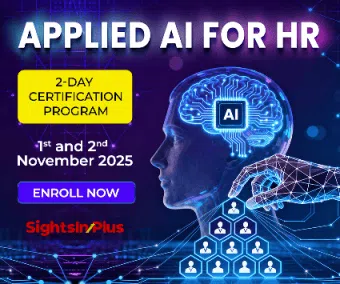A glance through a batch of new joinees, cohort of people managers, or the executive committee of an organization, is enough to reflect on the D&I maturity of an organization. With so much being talked about and structured teams leading the D&I Agenda in organizations, CEOs themselves propagating the D&I Agenda, if one still slices and dices any organizational cohort, the story will largely remain the same!
And why is this so? Isn’t the Business case established? And the importance and value which a diverse and inclusive workplace brings, are well known. It is, at least to a fair extent.
Then are we missing something, let’s look at a couple of factors impacting diversity unfavorably.
- First and foremost, is the simple Demand Supply Gap. Sectors like core manufacturing, and engineering are primarily male–dominated. Let us take any automotive company or oil & gas or engineering ones. There is a practical difficulty in getting diversity because even if one wants, the available pool is grossly inadequate. Historically engineering colleges in core subjects for the manufacturing domain have seen very low representation in the admission stage itself, which is bound to shrink the overall pool.
- Most engineering or process–based manufacturing companies work for 24 hours in 3 shifts. Government rules mandate extra compliance for female employees. E.g. special approval for women working late, safe transport facilities back home at late hours. Employers or organisations might see that as an additional operating expense associated with diversity hiring. Biological differences too play an important factor. Women go through pregnancy and they have to nurse the newborn. This calls for them to be physically away from the office. There are possible career breaks and the ability to come back to the mainstream may face a bit of a setback.
- Apart from these practical challenges, unconscious bias is a big challenge where we stereotype people and therefore form an attitude or view about them. It then creeps into all the processes – hiring, work allocation, career movement, and talent decisions. This is to such an extent that even when AI was taught to do hiring on its own people..it came to the fourth that it had learnt the biases that are ingrained in our attitude to different types of people!
- Another point is the lack of focus, sponsorship, and allyship within organisations. We see lip service in many cases and it’s not made a leadership agenda like customer centricity or quality or innovation. It is a “nice to have” and in many instances more of a social responsibility and not integral to the business. We also see a lack of representation. The diversity councils do not have leaders who really matter or can make things happen, it’s mostly delegated to N – 2 level.
- Another critical area is the resistance to change – Implementing D&I may require significant changes to an organization’s culture, policies, and practices which can be met with resistance from some employees or leaders. Overcoming resistance to change requires education and training that helps people to understand the benefits of D&I. It also involves investments that organisations may not be forthright in putting on the table. For example, to introduce a 3rd gender in the Organisation entire SAP system needs to be modified because only male/female tabs were insufficient. Medical policies had to be amended to give benefits to same-sex partners. Even Insurance companies still don’t offer these benefits.
- Social taboo is a big thing in India. We often see that in India the LGBTQ community is looked down upon as unnatural. Hence people are scared to come out of the closet and express their sexual identity or preferences for the fear of being outcast. So we have seen though efforts are taken there are not too many takers, hence it remains predominantly a gender or generational issue.
With these factors playing in the backdrop, efforts on just pushing some hiring in pockets or earmarking fresher’s intake to up the diversity proportion may not be a path-breaking or sustainable solution! The challenge is more fundamental and hence first needs to be made inclusive, with each people manager, each influencer sensitized, and each owning his or her own action plan to contribute to the agenda!
While there are efforts being put in and actions being taken, commitment & actions by senior leadership need to be more concrete, widespread, and real. The D&I councils need a better representation of influencers who really matter and can drive the agenda. There has to be continuous sensitization for the managers and leaders on the impact of unconscious bias and absolutely zero tolerance for non-inclusive behaviours.



